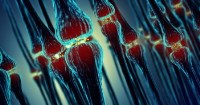 Neuroscientists at MIT recently presented the results of a new study illuminating the role of an autism-linked gene. The gene, Shank3, plays a crucial role in the formation and maturation of neurological synapses. Only a handful of genes play a potent role in causing the disorder, but mutations in Shank3 are among the most common. About 0.5% of people with autism have a mutation in the Shank3 gene.
Neuroscientists at MIT recently presented the results of a new study illuminating the role of an autism-linked gene. The gene, Shank3, plays a crucial role in the formation and maturation of neurological synapses. Only a handful of genes play a potent role in causing the disorder, but mutations in Shank3 are among the most common. About 0.5% of people with autism have a mutation in the Shank3 gene.
Although neuroscientists know that Shank3 plays a role in the synapse as a scaffolding protein – organizing hundreds of other essential proteins in the synapse – its exact function remains elusive. This is due, in part, to the role two other Shank proteins play in the synapse. All three Shank proteins have overlapping functions, which make it difficult to single out Shank3’s exact individual role.
This complication found in humans does not exist in fruit flies who only have one version of the Shank gene, which makes fruit flies an essential experimental organism in the study of the Shank3 protein. The researchers can completely remove the gene for the Shank protein in fruit flies, thus enabling them to study the consequences of an absent Shank gene.
After removing the Shank protein gene from the fruit flies, researchers found two direct effects: the postsynaptic cells had many fewer boutons (sites where neurotransmitter release occurs), and the boutons that did form were not properly developed.
The direct implication of these effects requires more research, but the neuroscientists hypothesize that a shortage of functional postsynaptic neurons hinders the development of neural circuits. As a child learns during the key toddler and preschool years, neural circuits continually make new connections and destroy unneeded existing connections. However, if the neural circuits cannot properly develop, the stimulation the child receives from the environment will not produce the expected neurological development
Although anatomy of neural circuits in fruit flies and human is highly conserved evolutionarily, there still exist many differences between the neurology of a human and that of a fruit fly. Therefore, no definite conclusion can be made regarding Shank3’s role in autism in humans. Still, the research guides the way for more studies to research the cause of autism and potential treatments.
For more information: https://news.mit.edu/2016/neuroscientists-illuminate-role-of-autism-linked-gene-0524




